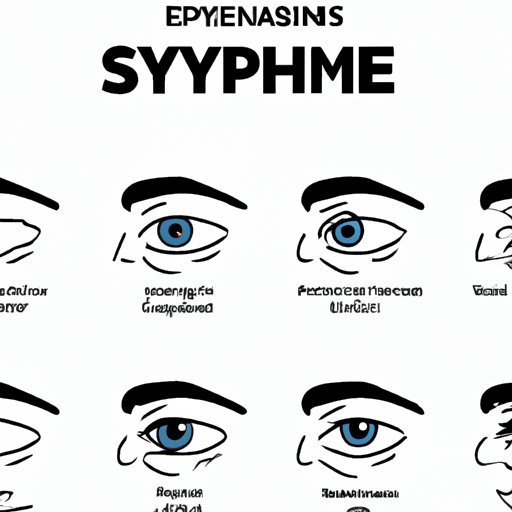
Introduction
Eye stye, also known as hordeolum, is a small bump that appears on the eyelid or near the eye due to a bacterial infection. It is a common condition that can be quite painful and uncomfortable. Common symptoms of eye stye include redness, swelling, tenderness, and a pimple-like bump on the eyelid. Fortunately, there are several ways to get rid of eye stye and alleviate its symptoms.
Home Remedies for Treating an Eye Stye
One of the most effective home remedies for treating an eye stye is using a warm compress. Applying a warm compress for 10-15 minutes several times a day can help reduce swelling and discomfort. To make a warm compress, soak a washcloth in warm water and wring it out before placing it over your eyes.
Another home remedy for eye stye is using tea tree oil. Tea tree oil has antibacterial properties that can help fight the infection causing the eye stye. Simply mix a few drops of tea tree oil with a carrier oil like coconut oil, and apply it gently on the affected area.
Turmeric, a popular spice, can also be used as a home remedy for eye stye. Mix a small amount of turmeric powder with water to make a thick paste, and apply it on the affected area. Turmeric has anti-inflammatory properties that can help reduce redness and swelling.
Best Over-the-Counter Treatments for Eye Stye
While home remedies can be effective, over-the-counter (OTC) treatments can also help alleviate the symptoms of eye stye. Antibiotic ointments, such as erythromycin and bacitracin, can help fight the bacterial infection causing the stye. Anti-inflammatory creams, such as hydrocortisone, can help reduce inflammation and provide relief. It is important to note that these treatments should only be used under a doctor’s guidance.
When choosing an OTC treatment for eye stye, it is essential to read the labels carefully and follow the instructions. Some treatments may not be suitable for pregnant women or people with certain medical conditions. If in doubt, consult a doctor or pharmacist before using an OTC treatment.
Prevention Tips for Eye Stye
Prevention is always better than cure when it comes to eye stye. There are several habits you can adopt to reduce your risk of getting an eye stye, including:
- Wash your hands thoroughly before touching your eyes or face.
- Avoid touching or rubbing your eyes with dirty hands.
- Do not share personal items like towels, washcloths, or eye makeup with others.
- Clean your contact lenses and replace them as recommended by your eye care professional.
- Avoid wearing eye makeup or contact lenses while you have an eye stye.
Maintaining good hygiene is essential for preventing eye stye. Additionally, ensuring good eye health through regular eye exams and a balanced diet can also help reduce the risk of styes.
Causes of Eye Stye
Eye stye can have several different causes, including bacterial infections, poor hygiene, hormonal imbalances, and more. It is essential to identify the root cause of the stye to effectively address it. In some cases, an eye doctor may perform a culture test to determine the type of bacteria causing the infection. A diagnosis can help determine the best course of treatment.
Medical Treatments for Eye Stye
While home remedies and OTC treatments can help alleviate the symptoms of eye stye, medical treatments may be necessary in more severe cases. An eye doctor may prescribe oral antibiotics to help fight the bacterial infection. In some cases, they may recommend steroid injections or surgical drainage to alleviate more severe symptoms. It is essential to seek professional medical attention if the stye persists or gets worse.
Conclusion
Eye stye can be a painful and uncomfortable condition, but there are several ways to treat and prevent it. Home remedies like warm compresses and natural remedies like tea tree oil can help alleviate the symptoms. OTC treatments like antibiotic ointments and anti-inflammatory creams can also be effective. Maintaining good hygiene, avoiding sharing personal items, and maintaining good eye health can all help prevent eye stye. In more severe cases, it is essential to seek medical treatment from an eye doctor. By taking proactive measures, you can effectively manage eye stye and prevent it from recurring in the future.





